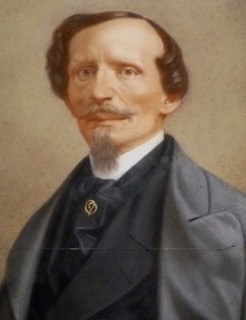Bettino Ricasoli facts for kids
Quick facts for kids
Bettino Ricasoli
|
|
|---|---|
 |
|
| Prime Minister of Italy | |
| In office 20 June 1866 – 10 April 1867 |
|
| Monarch | Victor Emmanuel II |
| Preceded by | Alfonso Ferrero La Marmora |
| Succeeded by | Urbano Rattazzi |
| In office 12 June 1861 – 3 March 1862 |
|
| Monarch | Victor Emmanuel II |
| Preceded by | Count Cavour |
| Succeeded by | Urbano Rattazzi |
| Member of the Italian Chamber of Deputies | |
| In office 18 February 1861 – 23 October 1880 |
|
| Constituency | Florence |
| Mayor of Florence | |
| In office 13 December 1847 – 16 November 1848 |
|
| Monarch | Leopold II |
| Preceded by | Vincenzo Peruzzi |
| Succeeded by | Ubaldino Peruzzi |
| Personal details | |
| Born | 9 March 1809 Florence, Arno, French Empire |
| Died | 23 October 1880 (aged 71) Brolio Castle, Gaiole in Chianti, Kingdom of Italy |
| Nationality | French-Italian |
| Political party | Historical Right |
| Spouse | Anna Bonaccorsi |
| Children | Elisabetta |
| Education | Cicognini College |
| Profession | Landowner |
| Signature |  |
Bettino Ricasoli (born March 9, 1809 – died October 23, 1880) was an important Italian politician. He played a big part in the unification of Italy. He also served as the Prime Minister twice. People often called him the Iron Baron because he was known for being very strong and honest.
Contents
Bettino Ricasoli's Life Story
Early Life and Challenges
Bettino Ricasoli was born in Florence, Italy. When he was just eighteen, he became an orphan. His family's property was also deep in debt. However, a special rule by the Grand Duke of Tuscany allowed him to become an adult early. This meant he could take care of his younger brothers and manage the family's money.
He stopped his studies and moved to Brolio Castle. There, he worked hard to manage the family's lands. Thanks to his careful planning, he was able to pay off all their debts.
Starting in Politics
In 1847, Ricasoli started a newspaper called La Patria. He also wrote to the Grand Duke, suggesting ways to fix problems in the state. In 1848, he became the Gonfaloniere (a type of mayor) of Florence. But he soon resigned because the Grand Duke was not supporting liberal ideas.
Helping Italy Unite
In 1859, Ricasoli became the Minister of the Interior for Tuscany. He strongly supported Tuscany joining Piedmont, which was a big step towards uniting Italy. This union happened on March 12, 1860.
In 1861, he was elected as an Italian representative. He then became the Prime Minister of Italy, taking over from Count Cavour, who was a very famous leader.
As Prime Minister
During his time as Prime Minister, Ricasoli made several important decisions:
- He allowed volunteers who fought with Giuseppe Garibaldi to join the regular army.
- He let Giuseppe Mazzini, another important figure, return from exile.
- He tried to make peace with the Vatican. However, the Pope did not agree to his proposals.
Second Term and Later Years
Ricasoli resigned in 1862 due to disagreements with other politicians. But he returned to power as Prime Minister in 1866. During this time, he showed his strong character. He refused an offer from Napoléon III to give Venetia to Italy if Italy left its alliance with Prussia. He also turned down a Prussian award because his ally, Alfonso Ferrero La Marmora, was not receiving one.
Towards the end of 1866, French troops left Rome. Ricasoli tried again to reach an agreement with the Vatican. He suggested that Italy would return church property if the Church paid a large sum of money over time. The Vatican agreed, but the Italian Parliament did not. Even after Ricasoli dissolved the Parliament and called for new elections, the new Parliament was still against his plan.
Without waiting for a vote, Ricasoli resigned from office. After this, he mostly stayed out of politics. He spoke in Parliament only a few times. He passed away at his Castello di Brolio on October 23, 1880.
The Iron Baron and Chianti Wine
Bettino Ricasoli was known for his honesty and strictness in both his private and public life. This is why he earned the nickname Iron Baron. Even though his plans with the Vatican didn't work out, he is still seen as one of the most important figures in the Risorgimento, which was the movement to unite Italy.
He also played a key role in creating the modern recipe for Chianti wine. He focused on using the Sangiovese grape as the main grape in the blend. This decision had a lasting impact on how Tuscan and Italian wines are made. His family's company, Ricasoli 1141, still makes wine at Brolio Castle today.
See also
 In Spanish: Bettino Ricasoli para niños
In Spanish: Bettino Ricasoli para niños
- History of Chianti

